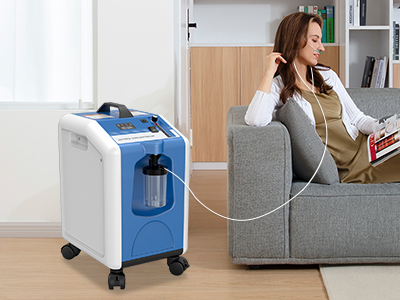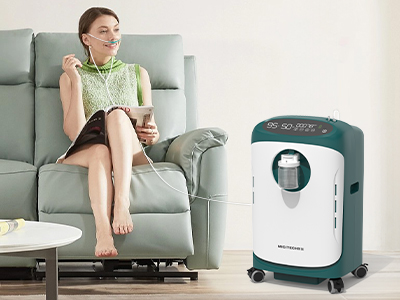20 Sep 2024
Medical-grade oxygen is a critical component in modern healthcare, essential for sustaining life in numerous medical scenarios. Unlike the oxygen we breathe in the atmosphere, which consists of about 21% oxygen, medical-grade oxygen is a highly concentrated form, reaching purity levels of at least 99.5%. This pure oxygen is indispensable in hospitals, clinics, and emergency settings, where its precise administration can mean the difference between life and death. The evolution of medical oxygen as a treatment modality can be traced back to the early 20th century, where its use became increasingly standardized, leading to its ubiquitous presence in today's healthcare systems.

How Medical Grade Oxygen Is Produced
The production of medical-grade oxygen involves advanced technologies that ensure its purity and safety. One of the most common methods is fractional distillation, where air is cooled to a liquid state, and then oxygen is separated from nitrogen and other gases due to their different boiling points. Another widely used process is Pressure Swing Adsorption (PSA), where air is passed through a molecular sieve, allowing oxygen molecules to be captured and concentrated while other gases are filtered out. Regardless of the method used, medical oxygen must meet stringent purity levels of 99% or higher to ensure it is safe for patient use, free from impurities, and suitable for medical applications.
Difference Between Medical Grade and Industrial Oxygen
A critical distinction exists between medical-grade oxygen and industrial oxygen. Although both gases may originate from the same source, their treatment and application differ dramatically. Medical oxygen undergoes stringent filtration and purification processes to ensure it is free from contaminants. In contrast, industrial oxygen does not require the same high levels of purity, as it is used for tasks like welding or chemical production. Industrial oxygen may contain impurities or toxins, posing significant health risks if administered to patients. This is why healthcare facilities strictly adhere to using certified medical-grade oxygen, ensuring patient safety.

Applications of Medical Grade Oxygen in Healthcare
Medical oxygen is ubiquitous in healthcare, serving a multitude of vital functions. It is indispensable in emergency rooms, where it is administered to patients suffering from shock, trauma, or cardiac arrest. In intensive care units (ICUs), oxygen supports patients with failing respiratory systems, while ambulances rely on portable oxygen tanks to stabilize critical patients en route to hospitals. For those with chronic respiratory diseases such as Chronic Obstructive Pulmonary Disease (COPD) or asthma, oxygen therapy provides long-term relief, improving quality of life. In surgical settings, oxygen is administered alongside anesthesia to maintain vital functions, ensuring the patient’s safety during operations.
The Role of Medical Grade Oxygen in Treating COVID-19 and Respiratory Diseases
The COVID-19 pandemic brought the critical importance of medical oxygen into sharp focus. For patients battling severe respiratory symptoms, including pneumonia, oxygen therapy became a frontline treatment. Medical-grade oxygen helps maintain proper oxygen saturation levels in the blood, which can plummet in severe COVID-19 cases. This supplemental oxygen ensures the body’s tissues receive enough oxygen to function effectively, even as the lungs struggle. Its role in treating other respiratory diseases, including pneumonia, bronchitis, and emphysema, cannot be overstated. Oxygen therapy remains a cornerstone in stabilizing these conditions, supporting patient recovery and reducing the strain on compromised respiratory systems.
Regulations Governing Medical Grade Oxygen
Given the critical nature of medical-grade oxygen, its production, distribution, and use are tightly regulated by various health authorities. Organizations like the U.S. Food and Drug Administration (FDA), the International Organization for Standardization (ISO), and the World Health Organization (WHO) all set comprehensive guidelines. These regulations ensure that oxygen delivered to hospitals and patients is of the highest purity, and meets stringent safety standards. For instance, FDA-approved oxygen must be free from any contaminants, such as moisture, particulates, or other gases, which could harm patients. These regulations also extend to storage and handling, ensuring oxygen tanks are properly sealed, labeled, and maintained.
Challenges in the Supply Chain of Medical Grade Oxygen
While the demand for medical-grade oxygen is high, especially in emergencies, ensuring a steady supply presents significant challenges. Distribution bottlenecks can arise, particularly in regions with limited resources or during times of crisis. The COVID-19 pandemic, for example, exposed vulnerabilities in global oxygen supply chains, with many hospitals and clinics facing critical shortages. Oxygen shortages can be life-threatening, particularly for patients who rely on it for survival. Additionally, logistical challenges, such as transporting oxygen to remote areas and maintaining the infrastructure required to support oxygen storage, are ongoing concerns that healthcare providers must navigate.
Future Trends and Innovations in Medical Oxygen Supply
The future of medical oxygen is driven by technological advancements aimed at making oxygen more accessible and sustainable. Portable oxygen concentrators are a key innovation, allowing patients to receive oxygen therapy on the go, increasing their mobility and quality of life. These devices pull oxygen directly from the air, eliminating the need for bulky oxygen tanks. Additionally, emerging technologies are focusing on making the production of medical oxygen more energy-efficient and eco-friendly, which could reduce costs and carbon footprints. Artificial intelligence (AI) and smart monitoring systems are also playing a role in enhancing the reliability of oxygen delivery, ensuring that hospitals and clinics can predict and respond to oxygen demands more effectively.
Conclusion
Medical-grade oxygen is the unsung hero of healthcare, quietly but crucially saving lives every day. From stabilizing trauma patients in emergency settings to supporting those with chronic respiratory illnesses, oxygen’s role is irreplaceable. While challenges in its supply chain persist, ongoing innovations are ensuring that more people worldwide can benefit from this vital resource. As healthcare continues to advance, medical-grade oxygen will remain at the forefront, a silent but essential force in the battle for better patient outcomes.
Keywords: oxygen
Originally published 20 Sep 2024, updated 20 Sep 2024.